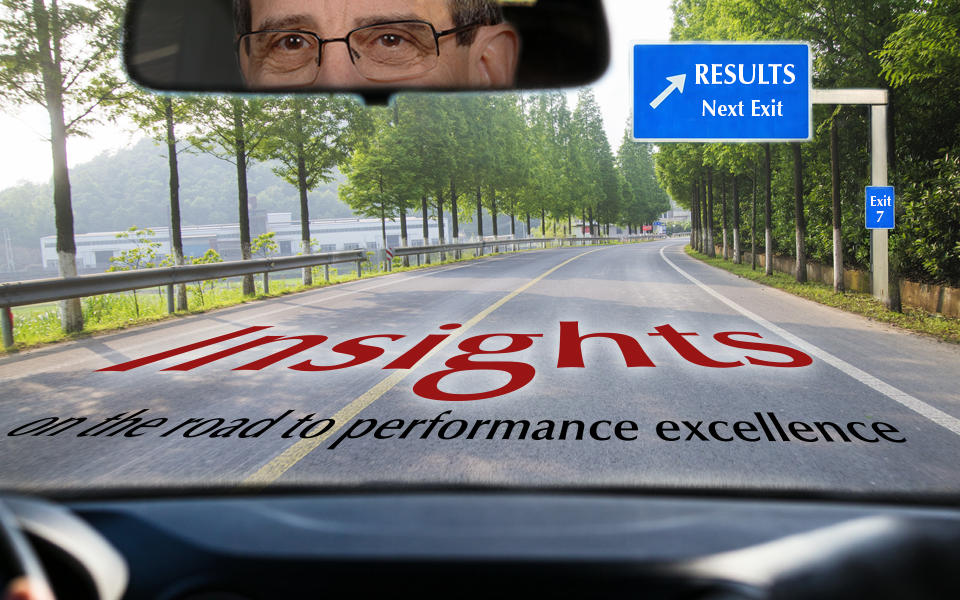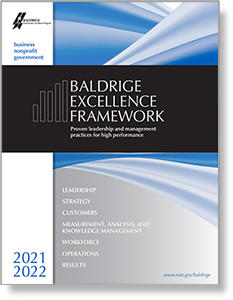Blogrige
The Official Baldrige Blog

The Baldrige Excellence Framework has a set of 11 foundational beliefs and behaviors (core values) that underpin its systems approach to achieving organizational high performance. One of those core values is agility and resilience. While both agility and resilience are important, many of us conflate these two concepts. I believe understanding their differences and complementarity will help organizations consider all aspects of preparing for uncertain futures.
Definitions
Agility refers to the ability to make rapid change and achieve flexibility in operations (1) in response to changes in the external environment, or (2) to take advantage of an immediate opportunity.
Resilience refers to the ability to (1) anticipate, prepare for, and recover from disasters, emergencies, and other disruptions, and (2) protect and enhance workforce and customer engagement, supply-network and financial performance, organizational productivity, and community well-being when disruption occurs.

The Differences
Resilience requires an organization to have the capacity for agility. In addition, resilience addresses the capacity for addressing unanticipated, sudden disruptions. Agility is about the organization. Resilience is about the organization, people, and communities. Resilience addresses not only the ability to make change, but also the ability to bounce back and bounce forward. Resilience is about balancing the short-term needs caused by sudden disruptions and also focusing on the long-term opportunities.
Organizational resilience is a way of being that builds agility into the organization's DNA. Organizational resilience has a short-term focus and a long-term focus. Agility alone can hurt organizational resilience. Moving too quickly can result in change that negatively impacts the long-term. Resilience could negatively impact short-term profits or budgets because it might require building some redundancy and options into organizational work systems, an "anti-lean" approach.
Resilience is about achieving an agile organization that casts a wider net to seek potential, and otherwise unanticipated, disruptions. Resilience is not just about disruptive change, but also seeking long-term benefit for the organization and its diverse stakeholders.
In a Conference Board blog based on his book, Mastering Turbulence: The Essential Capabilities of Agile & Resilient Individuals, Teams, and Organizations, Joseph McCann points out that the impact of agility may be a narrow path or singular approach that removes needed buffers that provide a safety net for more disruptive change. Agility alone can create unsupported exposure to surprises and shocks — "frAgility" — according to Casey Mulqueen (PDF). Agility requires being comfortable with change; resiliency looks for the long-term opportunities in change.
The People Aspects
Organizations can be agile, but to be resilient they require people who are both agile and resilient. People can withstand a change with the proper training and properly developed mindset. However, to be resilient and adaptable on an ongoing basis and in a disaster-prone environment requires much greater skill and personal development. Just think of the current environment; we are over a year into the COVID-19 pandemic and think of the human strains it has caused, resulting in many organizational strains.
Many of the currently successful, resilient organizations have achieved that status because they put people first and planned for people's needs: their employees, their customers, and their communities at large. These organizations bounced forward by looking at the larger community needs that the organizations had the potential and capabilities to address.
According to a meQuilibrium e-book on agility and resilience, the World Health Organization calls stress "the health epidemic of the 21st century." The e-book authors report that resilience is strongly associated with lowering stress. The cost of stress is 9% higher health care costs and 20% higher absentee rates. Achieving the proper mindset enables employees to face the stress and shift their attention to the future. Organizational agility then allows them to contribute to change.
An Example: Supply Network Agility vs. Resilience
Being agile in the 1990's, many companies and other large purchasers of supplies globalized their supply base to distant, less expensive economies. They reduced expenses, leaned their production systems, and enhanced or retained a competitive position in the marketplace. And this was accomplished with speed. The companies were truly agile.
In a Brookings Institution Tech Stream, Eleftherios Iakovou and Chelsea White III report that global trade jumped from 39% of global GDP in 1990 to 59% of global GDP in 2019 as supply chains moved abroad.
Over the last two years, extreme weather events, global pandemics, cyberattacks, and other disasters have resulted in severe structural problems in the delivery of goods and services to customers. Over-reliance on singular, distant supply chains has impacted national economies and global healthcare.
A simple focus on being agile and lean resulted in brittle production systems. In the process of improving budgets and profit margins, we lost our ability to be resilient. According to Iakovou and White, to be resilient we need supply networks that are robust and that can recover quickly to the pre-disruption state or, even, a more desirable state. To achieve this resilience requires: (1) rapid detection, response, and recovery from disruptive conditions; (2) end-to-end, data-driven supply network effectiveness. This means being able to trace a successful pathway from raw materials to finished product, from your suppliers' suppliers to the end customer; and (3) redundancies, including emergency stockpiles and diversified sourcing of supplies, including localized sources.
Some Final Thoughts on Resilience
Organizational resilience may have some short-term financial downsides, but it prepares the organization for long-term financial, customer, workforce, societal, and strategic success. Resilience is about taking the wider view. Resilience is about being strategic, balancing long-term and short-term success. Resilience requires agility and a focus on long-term consequences. Resilience is the goal!
Finally, a special word of thanks to Arnie Weimerskirch, a former chair of the Baldrige Panel of Judges, who sent me an email with some of his questions and thoughts about agility and resilience. His inquiry led me to further reading and cogitating about the two concepts, resulting in this blog post. Thanks Arnie!
Resources

Baldrige Excellence Framework
The Baldrige Excellence Framework has empowered organizations to accomplish their missions, improve results, and become more competitive. It includes the Criteria for Performance Excellence, core values and concepts, and guidelines for evaluating your processes and results.
Purchase your copy today!
Available versions: Business/Nonprofit, Education, and Health Care
About the author
Related Posts
Comments
Thanks for your comment. I agree that neither resilience nor agility are verbs. The definitions given in the blog refer to both of these words as "the ability to...."
Harry:
Excellent, thoughtful blog. A lot to ponder as one tries to create and maintain organizations that can survive — and even prosper in uncertain times — by acknowledging and planning for resilience.
Thanks John! I know you and Arnie have been discussing the topic.
Great article.
And I have been meaning to drop a note and tell you that the "Insights" photo with you looking in the rear view mirror is tremendous and wonderfully creative!
Thanks Bob. The "Insights" photo is the creation of our tremendous graphic artist, LouAnn, who creates all our graphics with great ingenuity (and insight!)
"Agile May Be Fragile, but Resilience is the Goal" from NIST Blogrige offers a thought-provoking perspective on the balance between agility and resilience in organizational practices. Drawing from my experience in project management, I appreciate the nuanced approach taken in this article, highlighting the importance of cultivating resilience alongside agility to sustain long-term success. It's a timely reminder for organizations to prioritize building robust systems and capabilities to withstand disruptions while maintaining agility to adapt to changing environments.






Definition #2 seems at odds against any usage with which I'm (or Webster) seem familiar.
Can someone point me examples where people generally understand "resilience" as a verb, meaning "to protect and enhance workforce and customer engagement, etc."?